- Share
- Like
- Tweet
- Digg
- Tumblr
- VKontakte
- Love This
- Odnoklassniki
- Meneame
- Blogger
- Amazon
- Yahoo Mail
- Gmail
- AOL
- Newsvine
- HackerNews
- Evernote
- MySpace
- Mail.ru
- Viadeo
- Line
- Comments
- SMS
- Viber
- Telegram
- Subscribe
- Facebook Messenger
- Kakao
- LiveJournal
- Yammer
- Edgar
- Fintel
- Instapaper
- Copy Link
As far back as 1940, when Karolinska Institutet’s campus was created, architect Ture Rydberg planned for a large auditorium, or aula to use the word of the classical languages. The plans were, however, shelved due to lack of funds, leaving the university without any possibility to arrange public events for students or scientists.
In the beginning of the new millennia, a private donation from the Erling-Persson Foundation made it possible to complete the compound with the venue it needed so long. An auditorium at a university goes beyond the task of a lecture hall, as it is not only a tribute to science and education, but also a site for strong collective experiences.
Wingårdh Arkitektkontor AB’ involvement began with a proposal in an invited competition in 2001. The entry was selected for further development, and as the site later altered, the work started in September 2010.

Image © Tord-Rikard Söderström
The proximity to its large complex called for an expressive form. The abstract building cladded in six different types of glass stands like a bowl that leans heavily over the highway. The twisted elevation is made entirely of flat glass panes, and comprises triangular elements that form an airtight, energy-lean façade. In the interior, the wooden framework is as striking as the geometry.
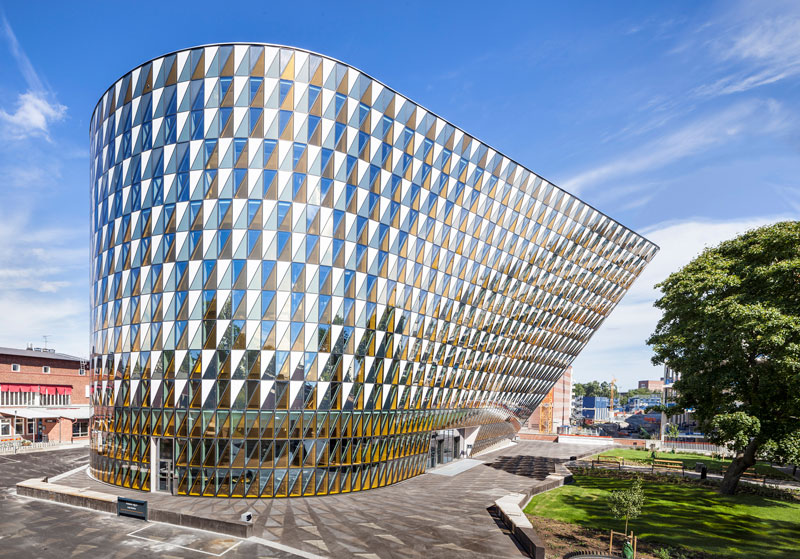
Image Courtesy of World Architecture Festival
As Karolinska Institutet selects the Nobel Prize laureates in medicine or physiology, there has been a demand for a large venue for their lectures. Despite the V-shaped seating that always has proved to be the most efficient, for Karolinska Institutet, the architects believed that an arrangement where the speaker and the audience could meet on an equal basis, mirrored the academic society of today best. That is why the level of the auditorium entrance is equal with the stage, as well as with the middle section of the dividable plenum.
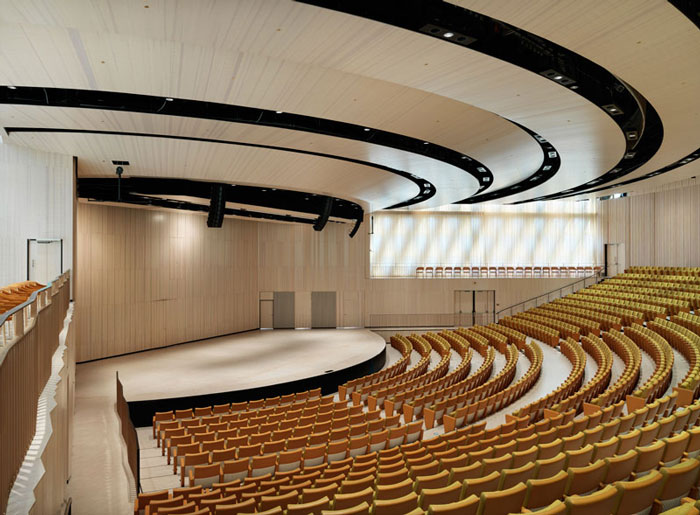
Image © Patrik Lindell
The 1000-seat auditorium dominates the building, has a mild, harmonious color scheme and creates a general feeling of intimacy. The entire structure stands on three legs, located together with stairs and elevators in each corner. The retracted supports have enabled uninterrupted spaces indoor as well as continuity in the outer form.
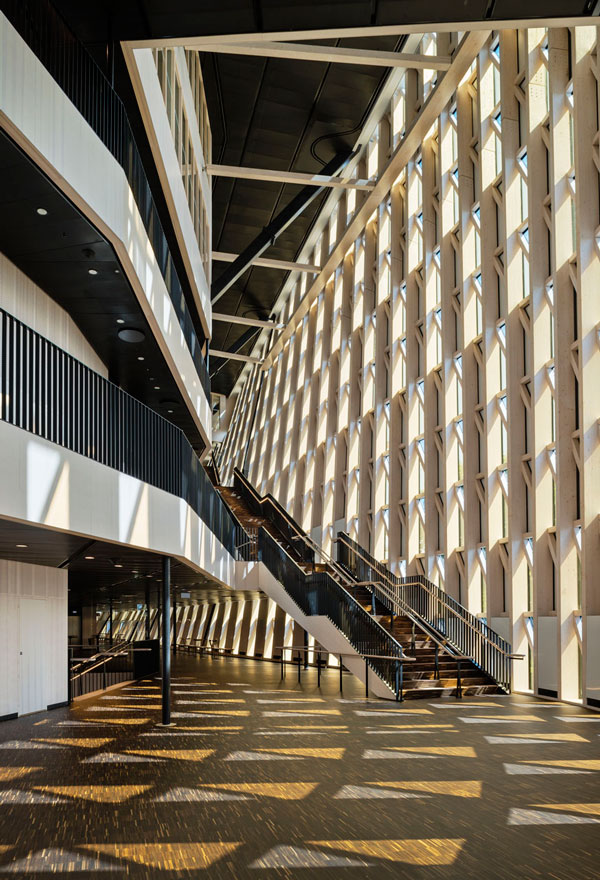
Image © Patrik Lindell
Daylight, efficiency and energy consumption (the aula has reached the “silver” level of sustainability) have been some of the key criteria when planning the aula, but the most visual statement will always be the inclined façade.
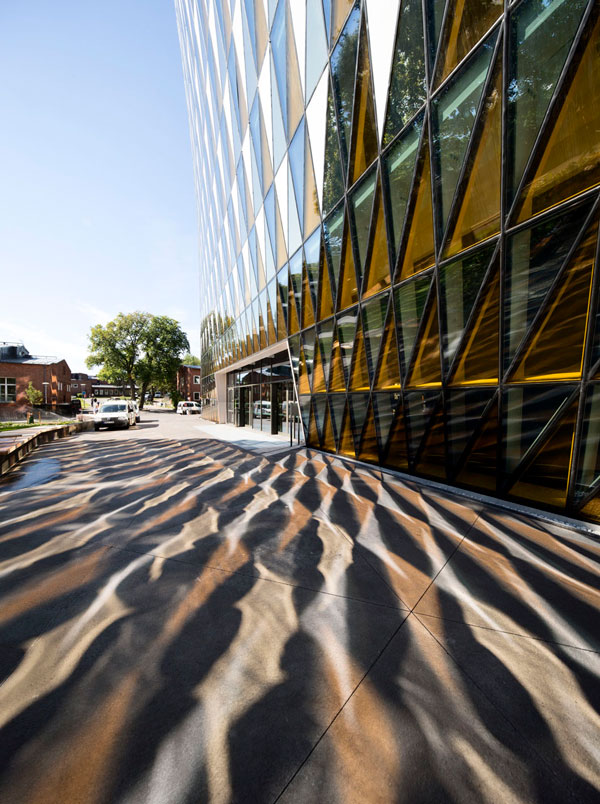
Image © Tord-Rikard Söderström
This iconic jewel formed in gold and black glass stands out and contrasts sharply with the other low, traditional, brick-built campus buildings.
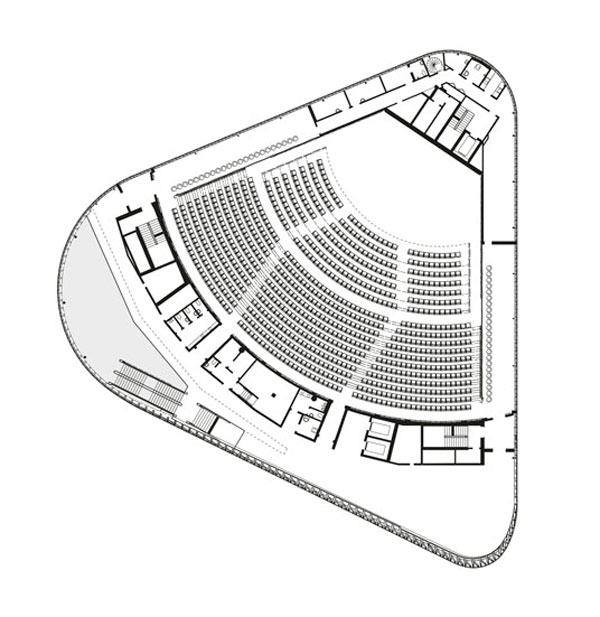
Image © Wingårdh Arkitektkontor
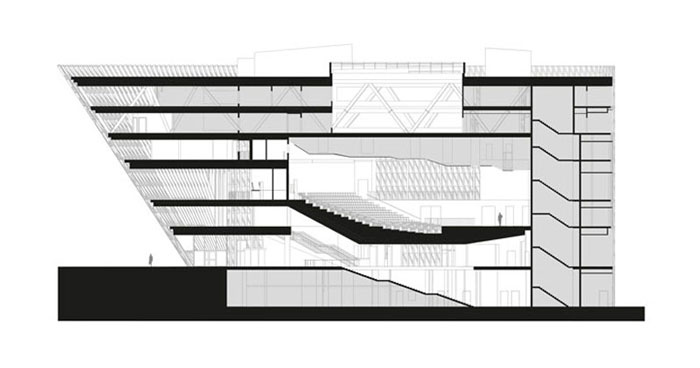
Image © Wingårdh Arkitektkontor
Facts:
Architects: Wingårdhs Arkitektkontor AB
Location: Solnavägen 7, Karolinska Institutet, 171 65 Solna, Sweden
Architects in Charge: Gert Wingårdh, Jonas Edblad
Contributors Construction Documents: Andreas Henriksson (Project Architect), Birgitta Stenvaller, Guisli Benito, Ronja Saxberg, Viktoria Wallin, Johan Wegbrant, Per Odebäck, Kjell Nord, Ingrid Alerås, Nils Korth, Maria Olausson, Anna Palm
Area: 13700.0 sqm
Project Year: 2013
Photographs: Tord-Rikard Söderström, Patrik Lindell, Ola Fogelström









